It’s a new day in Sri Lanka, both physically and figuratively. The sun is already blasting serious heat, melting away the dew that’s coating hibiscus flowers, forest trees and tea plantations. If you’re not woken by the whirring of the AC, it’ll be the birds who get you to your feet, chirping with real intention. The scent of curry and dahl already simmering for breakfast wafts through the windows.
Sri Lanka is superlatively beautiful. Its trees tend to flower, its waters are cloaked in lilies, and the landscape is peppered with waterfalls, emerald-green tea plantations and plunging valleys. The beaches are sandy and flanked by palm trees and rustic food shacks, with idyllic coves for swimmers, surfers and sun worshippers. The food is among the best in the world – fragrant, light and spicy. The curry is so good you’ll question why you’d ever eat anything else again, and – at the very least – why you’d never considered it as a breakfast option. It feels safe, calm and welcoming.
For an island so small, it is almost overburdened with things to do. Whether you want culture, beaches or adventure, Sri Lanka has it all on the menu. It also offers a roaring safari trade; the current leopard count stands at around 700, but you’re also likely to see elephants, monkeys and water buffalo. It’s the kind of place where you’ll find yourself looking at flights back there before you’ve even left.
It is also a place of contrasts. For all its beauty and cultural richness, Sri Lanka has been blighted by hardship. The terrorism attacks in Colombo of Easter Sunday 2019 decimated tourism, wiping out thousands of livelihoods. A year later, the pandemic struck. In March 2022, just as overseas travel looked like an option again, the country reached an economic tipping point resulting in food and fuel shortages. The lack of overseas medical supplies threatened the collapse of its health system. Finally, months later and with a bailout package under its belt, Sri Lanka is on the mend. This beautiful island and its natives haven’t half taken a battering and they need our support. They want us to visit. It’s time to return to Sri Lanka.
What to do:
Stay at a tea plantation
Since a tea plant was first smuggled from China to Sri Lanka in 1824, the island has become one of the world’s biggest tea importers. The cooler climate and humidity of the country’s central highlands provide perfect conditions to grow great tea – most famously Ceylon. Sri Lankan tea is also among the cleanest, thanks to strict pesticide restrictions. Stay at a tea plantation and allow yourself to become immersed in the tradition.
Tea Trails, one of three Sri Lankan hotels owned by Resplendent Ceylon, sits in the heart of the hilly plantations and comprises five restored historic tea planter residences, called bungalows. Each has their own personality, but we stayed at Tientsin, a colonial-inspired property with six rooms nestled in the tea-carpeted mountains. The rooms are expansive with four-poster beds, spacious bathrooms and private verandahs with views of the gardens. A large swimming pool and jacuzzi offer beautiful vistas, while the verdant English garden can’t help but calm the most stressed of visitors. There is no restaurant or menu, but instead a terrace and sitting room creating an intimate dining experience. The chef is happy to make whatever your taste buds desire, be it Sri Lankan or something closer to home (but we’d recommend the traditional Sri Lankan dishes). Tea Trails also offers tea factory tours, led by engaging guides who talk through not only the history and processes, but also what makes good tea (be warned: you’ll never drink PG Tips again after you’ve heard your guide’s insights). Staying at Tea Trails is like being at an incredibly wealthy friend’s home; it’s welcoming, luxurious and with decadently decorated shared spaces for dining and reading.
Go leopard-spotting at Yala National Park
Yala National Park is home to the highest density of leopards on the planet, and while no ranger would ever tell you that a spotting is guaranteed, it’s not unlikely to see one of these spotted creatures climbing over tree branches or chasing prey across the wilderness. Watch endangered sloth bears feasting on ripened palu fruits or elephants guiding their young through grasslands. Crocodiles keep cool in the swampy lagoons, while wild peacocks mince around hoping to attract the ladies.
Try glamping, Sri Lankan style
Even tenuously associating Wild Coast Tented Lodge with camping seems a reach; perched next to Yala National Park (and with daily safaris on offer) on a rugged, sandy beach, this tented resort boasts the country’s most luxurious tented accommodation. Each of the 28 ‘Cocoons’ are designed to look like the rocks and boulders that characterise the landscape, both in shape and colour. The safari theme continues inside with canvas walls, leather chairs and teak floors, but with modern luxury touches – free-standing copper bathtubs, AC and a Sonos sound system.
The design of the hotel restaurant and bar is gasp-inducing – a huge, dome-shaped, open-air pavilion with a bamboo roof made by local fisherman. Sustainably-made furniture sits next to the pool which wiggles its way round the edge of the dining area and bar. At night, the hotel offers sundowners on the beach where guests watch the sunset with a cocktail in hand. So close is the lodge to the national park that animals often make guest appearances, be it an elephant crossing your path as you head back from the bar, or monkeys swinging through the trees near your ‘Cocoon’. Daily game drives are included as part of the accommodation fee.
Explore Galle Fort
Built by Dutch merchants in the 17th century, Galle Fort is a Unesco World Heritage Site filled with pastel-coloured colonial buildings, ancient mosques, chic boutiques and stylish cafés and restaurants. Explore its narrow lanes on foot or bike, before stopping off for lunch at Pedlar’s Inn, a cavernous eatery with a secret terrace at the back. Shopping highlights include KK Boutique, a converted 17th-century mansion selling a mix of homewares, fashion and artworks made by local artists, as well as Olanda Antiques – a former Dutch colonial house with an impressive selection of antiques, collectables and reproduced furniture made in their workshop. End the day by watching the sunset from the beach.
Visit surfing paradise Weligama
It’s not hard to see why Weligama beach is fast becoming a go-to among surfers and style insiders. Not only is it safe to swim there, unlike many of the more rugged coastal areas in Sri Lanka, but its kilometre-long sandy shoreline peppered with colourful fishing boats and tropical trees is pure paradise. If you get tired of the surfing and sunbathing, take a walk to Taprobane, a tiny private island accessible by foot at low tide, where novelist Paul Bowles wrote The Spider’s House in the 1950s. The main strip is lined with cafés and restaurants – ideal for cooling down with a beer and a plate of Pakodas (fried fritters of flour and onions in a mix of chilli and spices). For a truly blissful lunch, try Silent Pup, just outside the town; a colourful, rustic beach bar, where the waves kiss your feet and turtles swim nearby.
Invest in a souvenir that celebrates Sri Lankan craftsmanship
Naturally, you’ll come home with a box of tea, but leave with a more lasting keepsake in the form of a handmade treasure created by one of the country’s numerous artisans. Among the colourful and creative crafts unique to Sri Lanka are Beeralu lace-weaving, a highly intricate and nearly extinct tradition that traces back to the 16th century when the island was led by the Portuguese; clay pottery, used to create rustic-looking pots, plates, vases and cups; and the handlooming of cushion covers, wall-hangings and sarees. Cane crafts are also popular in Sri Lanka, resulting in well-made bags, baskets, tables and chairs. Look out for roadside stalls and local markets to find shining examples.
Relax in luxury at a beachside resort
Round off your trip with a stay at Cape Weligama, regarded as one of the country’s most desirable and well-located luxury resorts. It sits on an elevated headland overlooking the Indian Ocean and boasts what is surely one of the best swimming pools in the world – a 60-metre, crescent-shaped lagoon, with an infinity edge that curves around the cape out to sea. The villas are arranged in wattas (‘gardens’ in Sinhala), each named after old-Ceylon explorers and in varying sizes, but all with the same understated, elegant decor, stone bathtubs and roomy verandas.
The restaurant sits on the edge of the cliff to maximise on those dreamy panoramas, and a bar is nestled just below with pathways leading out to more jaw-dropping lookout spots. Make sure you pay a trip to the spa, where attentive and skilled therapists offer excellent massages, facials and manicures.
Feast on delicious local cuisine
Sri Lankan cuisine is among the best in the world – expect light but fiery curries; pancakes that serve as bowls; flaky, crisp parathas; spicy, creamy lentil dahls; and fresh seafood, served with tangy flavours. Its food is born of the blend of different cultures and colonisers, from the Javanese and Indian to Arab and Dutch, which have kept bringing new twists. Although curries are a daily staple of the Sri Lankan diet, they are less heavy than what we know of curry in the UK; coconut milk and oil are more abundant than butter or ghee, creating a lighter dish.
Abercrombie & Kent (abercrombiekent.co.uk; 03301 734 712) offers a seven-night stay in Sri Lanka from £3,499pp based on two people sharing a room on a B&B basis. Includes flights, private transfers and guiding, staying across Resplendent Ceylon’s resorts.


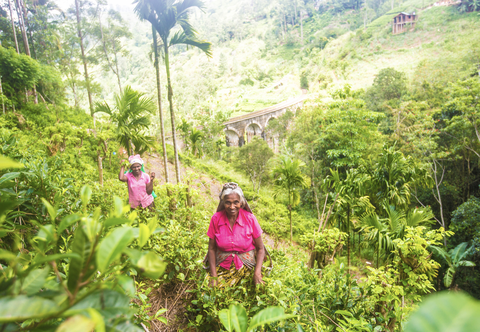
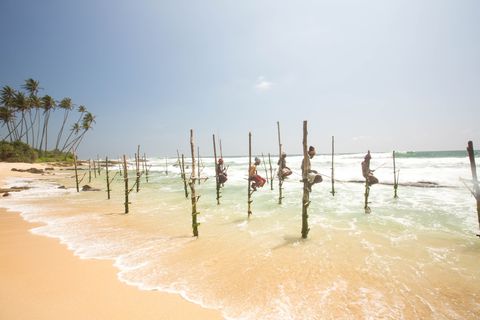

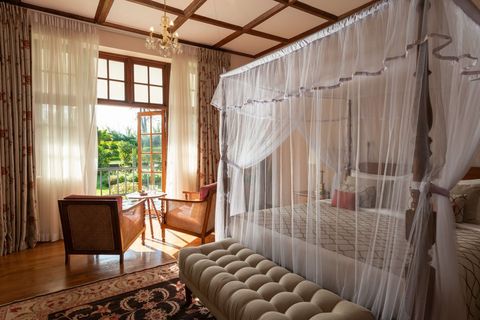

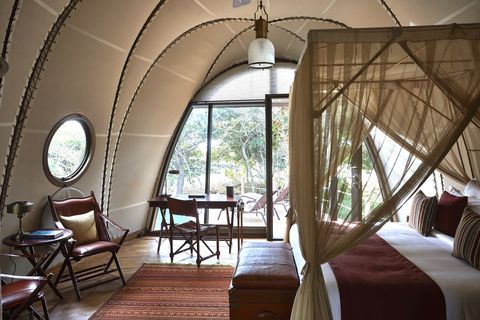
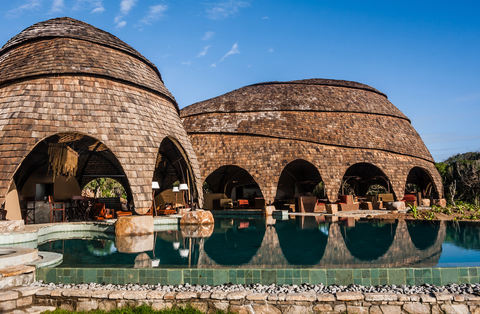









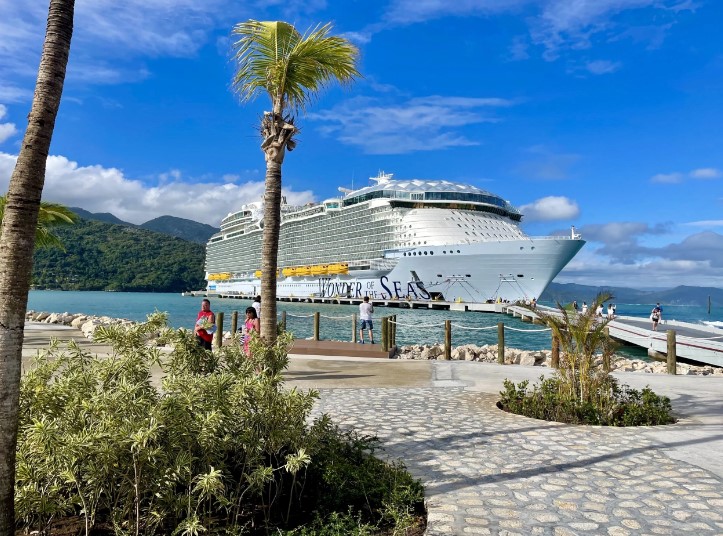
More Stories
This Phone Crossbody Is Perfect for Travel
Complete Guide To Croatia’s Medieval Seaside City
Universally Flattering Swimsuits I Always Pack